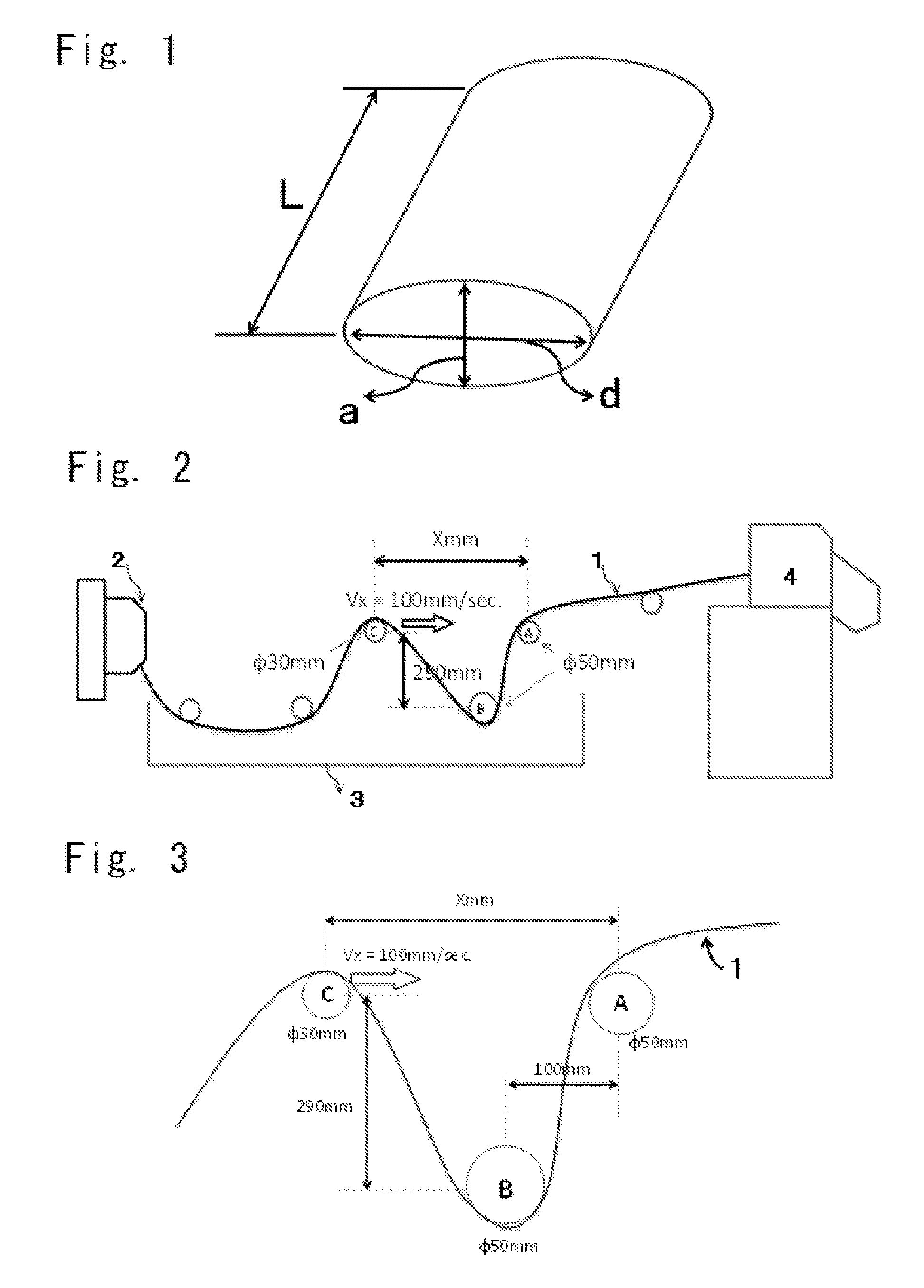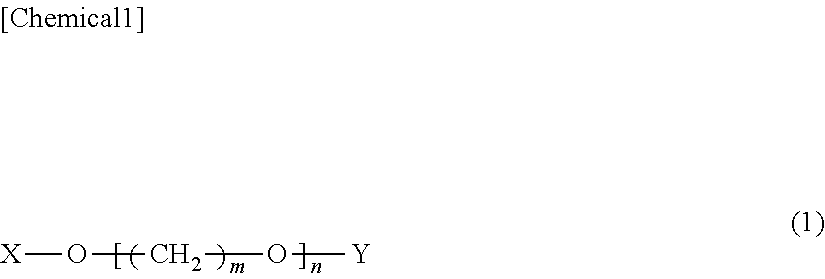Polycarbonate resin composition for thin optical component, and thin optical component
- Summary
- Abstract
- Description
- Claims
- Application Information
AI Technical Summary
Benefits of technology
Problems solved by technology
Method used
Image
Examples
examples
[0184]The present invention is described more specifically by the following examples. However, this should not be construed as limiting the present invention to the following examples.
examples 8 to 14
, Comparative Examples 6 and 7, and Reference Examples 1 to 3
[0196]The starting materials used are as shown in Table 4 below.
TABLE 4componentcodepolycarbonateA1aromatic polycarbonate resin for which bisphenolresin (A)A is a starting material, viscosity-averagemolecular weight = 14,000A2aromatic polycarbonate resin for which bisphenolA is a starting material, viscosity-averagemolecular weight = 12,500polyalkyleneB1polytetramethylene ether glycol given byether glycolHO(CH2CH2CH2CH2O)nH, n = 14,compound (B)product name: “PTMG1000”, from Mitsubishiwith formulaChemical Corporation(1)number-average molecular weight = 1,000B2polytetramethylene ether glycol given byHO(CH2CH2CH2CH2O)nH, n = 28,product name: “PTMG2000”, from MitsubishiChemical Corporationnumber-average molecular weight = 2,000phosphorusC1bis(2,6-di-tert-butyl-4-methylphenyl)stabilizerpentaerythritol diphosphite(C)product name: “Adeka Stab PEP-36”, fromADEKA CorporationC3bis(2,4-dicumylphenyl) pentaerythritoldiphosphite,produc...
example 15
[0205]The components indicated in Table 1 were blended in the proportions (mass parts) given for Example 5 in Table 2 and were mixed for 20 minutes in a tumbler followed by continuous feed to a vented twin-screw extruder (“TEX44αII” from Japan Steel Works, Ltd.) from the hopper of the extruder and melt-mixing in the extruder and extrusion under the following extrusion conditions: cylinder temperature=240° C., extruding rate=150 kg / h, and screw rotation rate=250 rpm. The extrusion was carried out from an extrusion nozzle provided with a die having an elliptical die orifice with a major diameter of 6.5 mm and a minor diameter of 3.5 mm with its major diameter made horizontal, and was carried out into a strand shape with the major diameter of the elliptical cross-section thereof made approximately horizontal. Polycarbonate resin pellets were obtained by introduction into a cooling water bath and then cutting at a pelletizer at a strand taking-up speed of 40 m / min and a cutter blade rot...
PUM
| Property | Measurement | Unit |
|---|---|---|
| Temperature | aaaaa | aaaaa |
| Temperature | aaaaa | aaaaa |
| Length | aaaaa | aaaaa |
Abstract
Description
Claims
Application Information
 Login to View More
Login to View More - R&D
- Intellectual Property
- Life Sciences
- Materials
- Tech Scout
- Unparalleled Data Quality
- Higher Quality Content
- 60% Fewer Hallucinations
Browse by: Latest US Patents, China's latest patents, Technical Efficacy Thesaurus, Application Domain, Technology Topic, Popular Technical Reports.
© 2025 PatSnap. All rights reserved.Legal|Privacy policy|Modern Slavery Act Transparency Statement|Sitemap|About US| Contact US: help@patsnap.com



